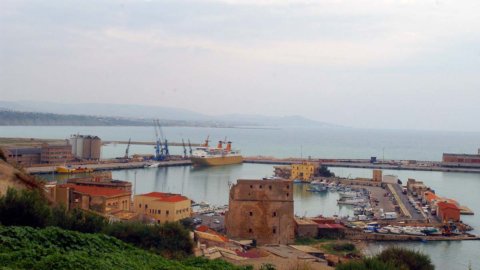“I don't have the crystal ball and I can't predict what the production of will become shale gas and oil ten years from now. Looking to today, however, the facts seem to indicate that improved understanding of shale's intrinsic secrets and continued technological advances have enabled the most efficient companies to overcome the price/cost hurdle and thrive despite the collapse in prices. petrolium.
Leonardo Maugeri, one of the leading international experts on hydrocarbons and associate professor at the Kennedy School of government of theHarvard University, with his analysis once again displaces many commentators who have launched into catastrophic forecasts in recent months on the negative impact of the collapse in oil prices on American shale production due to the difficulty of supporting production costs. His latest Briefing – Why Us shale keeps booming (Because US shale continues to expand) - was released a few days ago "by popular demand", as they say, after being overwhelmed, he says, by questions for clarification on the possible evolution of the current complex situation of the Petroleum whose prices continue to plummet. A dynamic that he himself had foreseen well in advance since 2012 and the facts proved him right.
The shale revolution, therefore, "will probably continue to challenge the most pessimistic forecasts" according to the manager who has led Eni's strategies for many years. The alarm raised by the fall in oil prices, in his opinion, is due to an underestimation of the potential shale that arises, in turn, "from outdated data, from the extensive use of econometric models that do not take into due account the rapid evolution of knowledge and technology in the shale arena, from the persistent underestimation of productivity increases per well, the drop in drilling costs, the lack of specific data regarding the different costs and the production yield of the different existing areas within the same shale field”.
“At the same time – warns Maugeri – ldrilling intensity and new technologies in this field, especially the pad-drilling (which allows several horizontal wells to be drilled from a single aboveground auger) compensated for the significant decline in production per well by simply drilling multiple wells in the same formation. And I'm inclined to believe that this drilling intensity will become the real limit on future expansion for shale production in the United States and around the world. In particular - he adds - this will happen in areas with the highest population density where the drilling intensity will bring out the points of aggression to the landscape and environmental damage that represent the dark side of the shale revolution. But this is another story and deserves a separate analysis”.
If these are the conclusions of Briefing 2, which can be read in the full English version below, it is interesting to see how Leonardo Maugeri argues his analysis, full of exclusive data. Shale gas production started from zero in 2000 and reached 35 billion cubic feet/day (Bcf) in July 2014. It is continuing to grow and is now at 42 Bcf. Growth has multiplied 6-fold since 2008 despite gas prices and the number of drilling operations having steadily fallen and being considered indispensable to sustain production growth.
Surprising especially if one considers, Maugeri continues, that for many analysts most of the American resources were considered too expensive to be developed and such as to require prices of at least $6 per Mbtu. Well, production instead recorded a huge boom and prices collapsed between 2008 and 2012 to $1,9 per Mbtu, the international unit of measurement. It is also surprising that the high intensity of drilling, an indispensable technical condition for shale production, has plummeted vertically, but production has continued to grow.
What happened then? A few examples can clarify what happened better than anything else. The production of the Marcellus shale, arguably the largest gas field in the world, grew six-fold between 2010 and 2014. Technical improvements and better knowledge of the business then pushed for a surge in the productivity of the new wells. Similarly, production from new wells increased 4-fold in Haneysville shale,another gas field, and 5 times in theEagle ford (which mainly produces shale oil). Finally it more than doubled in the field of Bakken, rich in shale oil. “At the same time according to my analysis – suggests Maugeri – drilling and development costs have decreased by 40% per single well from 2010 onwards. The combination of the increase in productivity and the draconian cost cut - concludes Maugeri - explains why the shale revolution has thrived despite the collapse in prices”.
The other element on which Maugeri invites us to reflect is the question of the analysis of “break even" he was born in marginal cost, two factors that vary dramatically according to the areas within the same field, so much so that "being the owner of the best or worst piece of land is the element that makes the difference between winners and losers". For example, Mc Kenzie County in North Dakota it is the most prolific area of the formation Bakken-Three Forks with an average output of 350.000 barrels a day, Maugeri reveals, equal to more than a third of Bakken's entire production (1,132 million barrels a day). The break even point for Mc Kenzie is $28 a barrel. Also in Bakken, the Divide County it produced just over 35.000 barrels in August but with a breakeven of $85. Above all, 80% of Bakken oil today has a break-even point below $42/barrel. breakeven and production levels. And that leads to misleading on both".
But the significant new phenomenon underway is that the oil crash is prompting companies to ask price reviews to companies supplying drilling, fraking, etc. services. Claims doomed to success, it appears, resulting in overall decreasing costs for the shale business in the foreseeable future. As far as marginal costs are concerned, even if it is formally correct to maintain that the marginal cost of production for Bakken has a break-even point of $85 per barrel, it is truly very misleading - concludes maugeri - not to observe that this number represents less than 3 per percent of Bakken's overall production. That's why the US shale boom is here to stay.
Attachments: Why the US shale boom will last.pdf





